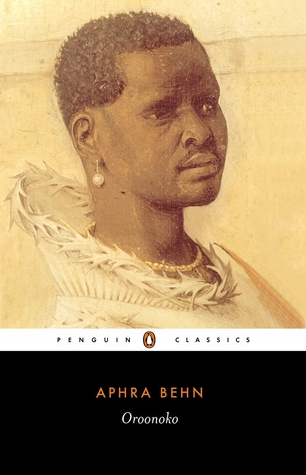The novel Oroonoko, while being considered progressive for its time, is still filled with racism that can even be seen translating into modern fiction works, specifically in those of young adult fiction novels. As an avid reader myself, I used to read a large amount of YA novels in my free time, but slowly lost interest in the genre as I realized that the characters were either cookie cutter white people (as depicted on the cover image for this post), or were racist depictions of POC, such as this book that I read in my early teenage years. The novel Oroonoko, while being considered progressive for its time, is still filled with racism that can even be seen translating into modern fiction works, specifically in those of young adult fiction novels. While reading Oroonoko I could not help being reminded of that racism, which was a mix of insulting the features of people of color while simultaneously managing to fetishize the characters for their race.

What I found the most interesting in Oroonoko was its description of the main character, which I felt could be translated to the past version of “you’re good looking for a black person” This is something many people intend as a compliment, not seeing the inherent racism present in the statement. One example of Oroonoko doing this is present on page 154 where she describes his face as “not of that brown rusty black which most of that nation are, but of perfect ebony or polished jett”. Although it is true in a sense that Behn is pointing out his blackness as a compliment, she has essentially insulted the entirety of the race and creates a separation between him and his race which, in reality, is not there at all. This is not the only time that she attempts to separate him from the rest of his race by essentially describing him as being uncharacteristically handsome compared to other black people. He is also described as “adorn’d with a native beauty, so transcending all those of his gloomy race” (152). It is also interesting to see what exactly sets him apart from the rest of his race that supposedly makes him so much more handsome in the first place.

As Behn continues to describe him, one can clearly see that the distinction does not have to do with any type of features that are uniquely African, instead it is his white features that set him apart and make him handsome. “His nose was rising and Roman instead of African and flat. His mouth the finest shaped that could be seen; far from those great turn’d lips, which are so natural to the rest of the negroes.” (154). Here there is a clear comparison being made between the typical African features and the “beautiful” features that the main character possesses that is so unlike these African features. Here it is clear to see that any compliments paid to his appearance do not come from a rejection of white beauty standards, and instead completely fall in line with them.

The young adult novel in particular that came to mind when reading these depictions is titled Eleanor and Park, a book that I read and enjoyed a few months ago until this review and a few others came to my attention. This novel also features a non-white main character, Park, who is very much considered beautiful because of his white features. Any other time he is described as being attractive, it is done in the stereotypical way that strips East Asian men of their masculinity. “You’re so pretty, and so good. You have magic eyes.” This quote, said by Eleanor, sums up exactly how Park is described throughout the book. His “magic” eyes are due to his white father, whereas his “pretty” side comes from his Korean mother. Although this description of a person of color is certainly different and much less insulting than calling the rest of the race “gloomy” it still is based in racism due to the unfortunate fetishism present in the descriptions. This book and Oroonoko are similar in that a lot of a character’s appeal and attractiveness comes from having “exotic” features while still not being like the typical person of color, which would either be considered unattractive or boring. Instead they are described as being exotic, but not too exotic that it would make them unattractive, they still have their white features to save them from that. Although representation of people of color in fiction has certainly improved in recent times, there is certainly still room for improvement, especially since the racism in these works are now present in a more subdued way that requires a critical eye to point out. I could not help being reminded of that racism, which was a mix of insulting the features of people of color while simultaneously managing to fetishize the characters for their race.